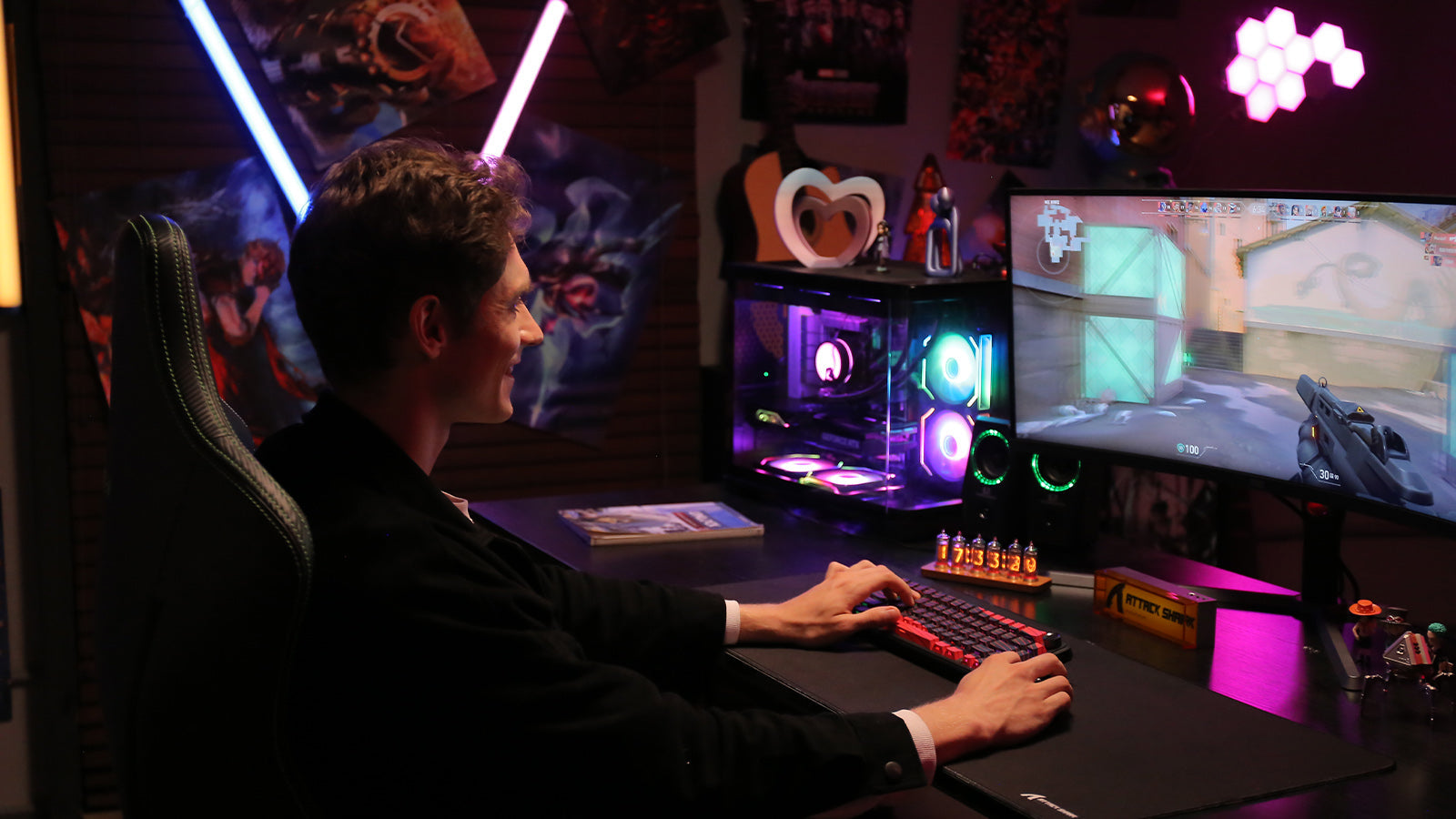Einführung
Für sowohl regelmäßige Spieler als auch Technikbegeisterte haben Gaming-Tastaturen das digitale Erlebnis verbessert. Über herkömmliche Tastaturen hinaus bieten sie fortschrittliche Funktionen, darunter ultra-reaktive Mechaniken, konfigurierbare Makrotasten und beeindruckende RGB-Beleuchtung. Um die maximale Leistung zu erhalten und das Potenzial Ihrer Gaming-Tastatur zu maximieren, ist es wichtig, mögliche Schwierigkeiten zu kennen und Lösungen zu finden, da Gaming-Peripheriegeräte immer komplexer werden.

1. Unempfindliche oder verzögerte Tastenanschläge
Ihre Spielerfahrung kann erheblich durch Verbindungsprobleme beeinträchtigt werden. Beginnen Sie damit, sicherzustellen, dass der USB-Port auf Ihrem Motherboard zuverlässig ist; versuchen Sie, die USB-Ports zu wechseln. Überprüfen Sie diese Einstellungen, da einige Tastaturen über einen "Gaming-Modus" verfügen, der möglicherweise unbeabsichtigt einige Tasten deaktiviert.
Überprüfen Sie regelmäßig die Treiber und Firmware Ihrer Tastatur. Ältere Software kann zu Problemen mit der Reaktionsfähigkeit und Eingabeverzögerung führen. Aktualisieren Sie auf die neueste Version, um Kompatibilitätsprobleme zu beheben und die allgemeine Leistung zu verbessern.
2. RGB-Beleuchtungsstörungen
RGB-Beleuchtung ist ein Schlüsselelement von Gaming-Tastaturen und nicht nur ein ästhetisches Feature. Überprüfen Sie zunächst die Programmeinstellungen oder die Schnellwahltasten auf Ihrer Tastatur, wenn die Lichteffekte ausfallen. Möglicherweise müssen Sie die Helligkeit anpassen oder einen anderen Beleuchtungsmodus auswählen.
Oft beheben Firmware- und Software-Updates ungewöhnliche Beleuchtungsprobleme. Die meisten Gaming-Tastaturen verfügen über eine Werkseinstellung, mit der Sie die standardmäßigen Lichteinstellungen einfach wiederherstellen können, entweder über Tastenkombinationen oder spezialisierte Software.
3. Nicht funktionierende Makrotasten
Makrotasten können manchmal unzuverlässig sein; sie sind jedoch leistungsstarke Werkzeuge für Spiele. Überprüfen Sie zunächst die Makro-Einstellungen im zugehörigen Programm Ihrer Tastatur. Jedes Makro sollte exakt und korrekt ausgeführt werden.
Seien Sie vorsichtig: Einige Spiele beschränken externe Makro-Eingaben. Wenn Sie Probleme haben, überprüfen Sie die Einstellungen des Spiels und versuchen Sie, die Makros neu zu programmieren. Außerdem kann das Deinstallieren oder Aktualisieren der Software der Tastatur bestimmte Konfigurationsprobleme lösen.

4. Tastaturabstürze oder Einfrieren
Unerwartete Abstürze der Tastatur können frustrierend sein, besonders während intensiver Spielsitzungen. Halten Sie die Software Ihrer Tastatur aktuell, da Firmware-Updates normalerweise Stabilitätsprobleme beheben. Suchen Sie nach verfügbaren Updates vom Hersteller.
Eine weitere Ursache für intermittierende Probleme kann die USB-Stromversorgung sein. Versuchen Sie, Ihre Tastatur an einen anderen USB-Port anzuschließen, vorzugsweise an einen, der direkten Strom vom Motherboard liefert, wenn sie regelmäßig die Stromversorgung verliert oder neu startet.
5. Wiederholungsprobleme bei Tasten
Ungewollte Tastenwiederholungen können Ihre Spielgenauigkeit stören. Passen Sie die Wiederholgeschwindigkeit der Tastatur über die Systemeinstellungen Ihres Betriebssystems oder über die Begleitsoftware der Tastatur an. Durch Feinabstimmung dieser Einstellungen können unbeabsichtigte Mehrfacheingaben beseitigt werden.
Überprüfen Sie die Anti-Ghosting- und N-Key-Rollover-Funktionen Ihrer Tastatur. Diese erweiterten Funktionen können manchmal unerwartet mit den Wiederholungseinstellungen interagieren, daher stellen Sie sicher, dass sie korrekt konfiguriert sind.
6. Erkennungsfehler im Spiel
Wenn es um die Kompatibilität der Tastatur geht, sind nicht alle Spiele gleich entwickelt. Fortschrittliche Gaming-Tastaturen könnten bei einigen älteren oder spezialisierten Spielen Probleme bereiten. Versuchen Sie, fortschrittliche Einstellungen oder Makro-Funktionen im Spiel zu deaktivieren.
Die meisten Gaming-Tastaturen bieten eine Umschaltung zwischen normalen und Gaming-Modi. Probieren Sie verschiedene Modi aus, um den besten für Ihr spezielles Spiel zu finden.

7. Gesperrte Tasten oder Tastatur
Unbeabsichtigte Tastensperren können verwirrend sein. Viele Gaming-Tastaturen bieten Funktionen, mit denen Sie bestimmte Tasten oder die gesamte Tastatur sperren können. Überprüfen Sie die Einstellungen, um sicherzustellen, dass keine versehentlichen Sperren aktiviert sind, insbesondere im Spielmodus.
Für spezielle Anweisungen zum Entsperren von Tasten und zum Zurücksetzen auf die Standardkonfigurationen können Sie das Handbuch oder die Website des Herstellers Ihrer Tastatur konsultieren.
8. Probleme mit den Multimedia-Tasten
Bequemlichkeit bietet Ihre Gaming-Tastatur durch die Multimedia-Tasten. Überprüfen Sie zunächst die Gerätetreiber, wenn diese nicht funktionieren. Eine vollständige Funktionalität der Multimedia-Tasten erfordert oft spezialisierte Treiber.
Überprüfen Sie die Multimedia-Tasten-Einstellungen Ihres Betriebssystems, um sicherzustellen, dass keine deaktivierten Konfigurationen oder Konflikte die ordnungsgemäße Funktion verhindern. Wenn nötig, setzen Sie die Einstellungen zurück und aktualisieren Sie die Treiber.
9. Synchronisierungsprobleme mit anderen Geräten
Die RGB-Synchronisation zwischen Gaming-Peripheriegeräten erfordert eine sorgfältige Einrichtung. Stellen Sie sicher, dass alle Geräte mit aktueller Firmware ausgestattet sind und dieselbe Steuerungssoftware verwenden. Unterschiedliche Einstellungen können zu ungleichmäßiger Beleuchtung führen.
Einige Programme ermöglichen es Ihnen, die Synchronisierungsfrequenzen manuell zu ändern. Probieren Sie diese Einstellungen aus, um eine einwandfreie Beleuchtung in Ihrem gesamten Gaming-Setup zu erzielen.
10. Übermäßiger Lärm oder Vibration
Tastaturgeräusche und Vibrationen können ablenkend wirken. Überprüfen Sie die rutschfesten Füße Ihrer Tastatur auf Abnutzung oder Schäden, da diese zu übermäßiger Bewegung während des Tippens oder Spielens führen können. Darüber hinaus kann regelmäßiges Reinigen Ihrer mechanischen Tastatur verhindern, dass sich Schmutz ansammelt, der Geräusche verursachen oder die Leistung beeinträchtigen kann.
Erwägen Sie den Einsatz von Vibrationsdämpfungspads, um den Tastenschlaggeräusch zu reduzieren. Diese Zubehörteile können das Tipp- und Spielerlebnis erheblich verbessern und den Komfort steigern.
Fazit
Das Erkennen und Beheben von Gaming-Tastaturproblemen hilft Nutzern, die maximale Leistung beizubehalten. Um das volle Potenzial Ihrer Gaming-Tastatur auszuschöpfen, ist es entscheidend, regelmäßig Wartung durchzuführen, Firmware-Updates durchzuführen und die richtigen Einstellungen vorzunehmen. Wenn Sie sich mit Wissen und proaktivem Handeln ausstatten, können Sie eine fehlerfreie, reaktionsschnelle und spannende Spielerfahrung garantieren.





Hinterlasse einen Kommentar
Diese Website ist durch hCaptcha geschützt und es gelten die allgemeinen Geschäftsbedingungen und Datenschutzbestimmungen von hCaptcha.